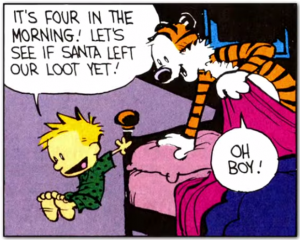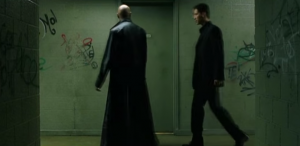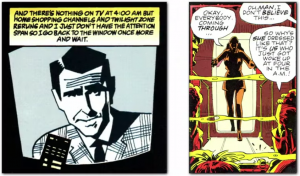Joanne Harris: Changing The World One Story at a Time
someone sets assignments!
You write because you need to write,
or because you hope someone will listen
or because writing will mend something
broken inside you or
bring something back to life.”
— JOANNE HARRIS —
Blackberry Wine
Author Joanne Harris describes the Butterfly Effect of a story she once read in a dentist’s waiting room, which would help save lives decades later, half way across the world.
She has always had a particular interest in the power of words, having been brought up with French as a first language among a Yorkshire family who spoke no French and a Breton family who spoke no English.
She considers the inconsistencies in the ways we are taught to regard the power of words, and the power of story telling in our lives. She also shares shares the wisest thing she has ever been told.
Joanne achieved world wide recognition with her third novel, the award-winning Chocolat which translated into the hugely popular film starting Juliette Binoche and Johnny Depp. Since then, all her books have been best sellers in the UK.
Joanne Harris is a patron of the charities Médecins Sans Frontières (Doctors Without Borders) and Plan UK, and has travelled to Togo and to the Congo to report on their work. An account of her visit to the Congo was published in Writing on the Edge, a collection of essays by noted literary figures, with photographs by Tom Craig, in 2010. She has also donated short stories to a number of charity anthologies, notably Piggybank Kids, the Woodland Trust, the Stop Climate Chaos Coalition and Breast Cancer UK.
In 2013 she was awarded an MBE in the Queen’s Birthday Honours List.
http://www.joanne-harris.co.uk/
BIBLIOGRAPHY
- The Evil Seed (1989)
- Sleep, Pale Sister (1993)
- Chocolat (1999)
- Blackberry Wine (2000)
- Five Quarters of the Orange (2001)
- The French Kitchen, A Cook Book (2002)
- Coastliners (2002)
- Holy Fools (2003)
- Jigs & Reels (2004)
- Gentlemen & Players (2005)
- The French Market (2005)
- The Lollipop Shoes (2007) (US title: The Girl With No Shadow, 8 April 2008)
- Runemarks (2007 in the UK, 2008 in the US)
- Blueeyedboy (1 April 2010 in the UK)
- Runelight (September 2011 in the UK)
- Peaches for Monsieur le Curé (May 2012) (US title: Peaches for Father Francis, October 2012)
- A Cat, a Hat and a Piece of String (October 2012)
- The Gospel of Loki (February 2014), as Joanne M. Harris
Stories featured in the following anthologies:
- Magic (2002)A collection of stories in aid of Piggybank Kids.
- Bosom Buddies (2003)A collection of stories in aid of Breast Cancer UK.
- Journey to the Sea (2005)A collection of stories in aid of Piggybank Kids.
- Mums – a Celebration of Motherhood (2006)A collection of stories in aid of Piggybank Kids.
- Dads – a Celebration of Fatherhood (2007)A collection in aid of Piggybank Kids.
- In Bed With… (2009)A collection of erotic stories by well-known female writers.
- Because I am A Girl (2010)Charity anthology in aid of Plan UK.
- Stories (2010) A collection of fantasy tales, edited by Neil Gaiman and Al Sarrantonio.
- Writing on the Edge (2010): A collection of eyewitness
Awards and Honours
Harris’ books are now published in over fifty countries and have won a number of UK and international awards, including:
- Chocolat: Creative Freedom Award (2000); Whittaker Gold Award (2001). Shortlisted: Whitbread Novel of the Year Award (2000), Scripter Award (2001); film version nominated for 8 BAFTAs and 5 Oscars.[7] Whittaker Platinum Award(2012).
- Blackberry Wine: 2000 Winner of both the Foreign and International categories of the Salon du Livre Gourmand (France).
- Five Quarters of the Orange: Shortlisted: 2002 RNA Novel of the Year; Author of the Year 2002; WHSmith Award 2002 (UK).
- The French Kitchen: (a cookbook with Fran Warde): 2005 Winner of the Golden Ladle for Best Recipe Book (softcover) in the World Food Media Awards.[8]
- Gentlemen & Players: Shortlisted for the Edgar Award, 2007 (USA)[7] and the Grand Prix du Polar de Cognac (France).[9]
- Flavours of Childhood: (a piece co-written for the Radio 4 series First Taste with poet Sean o’Brien) Winner of the Glenfiddich Award, 2006.[10]
In 2004, she was a judge for the Whitbread Prize (now the Costa), and in 2005, was a judge for the Orange Prize.[11]
In 2013 she was on the judging panel of the Royal Society Winton Prize for Science [12] and chaired the Desmond Elliott Prize.[13]
She is the holder of honorary doctorates in literature from the University of Huddersfield and the University of Sheffield, and is an Honorary Fellow of St Catharine’s College, Cambridge.
She works from a shed in her back garden [15] and is active on Twitter, where she is known as @joannechocolat, and tumblr, ( http://joannechocolat.tumblr.com/ ) which she uses, along with her website’s message board, to answer questions from her fans. She is married, and lives in Yorkshire with her husband Kevin and daughter Anouchka.
Read MoreSting: Rediscovering the Muse as The Last Ship Sails
constructed on the planet were built
right at the end of my street.”
— STING —
Sting grew up in the shadow of the shipyard, with giant ships rising into the air at the end of his street. Newcastle-Upon-Tyne was at the heart of the British shipbuilding industry.
The Dream
But instead of wanting to follow in the footsteps of generations of Tynesiders whose lives were inextricably linked with the docks and the shipbuilding industry, Sting had a different dream. It was one that grew exponentially with the discovery of a guitar in the attic at the age of 8 . “I was bequeathed a guitar and realised I had found a friend for life.”
The dream would become his life and Gordon Sumner would become internationally known as the musician Sting, but first he had to turn his back on his roots and travel away. He had no desire to return to the traumatised society he witnessed during the closure of the ship building industry.
It’s my belief that abstract economic theory that denies the needs of community or denies the contribution that community makes to economy is shortsighted, cruel and untenable”
— STING —
The muse Sting chose to follow as a singer/songwriter and multi-instrumentalist was one that would bring us such unforgettable songs as “Roxanne”, “Fields of Gold”, “Message in a bottle”, “Every Breath You Take” and “Englishman in New York”.
Sting’s astonishing success both as a member of “The Police” and during his solo career, together with his prolific song-writing ability made it particularly difficult for him to come to terms with a long period of “writer’s block” which stretched into years of self-questioning.
He eventually acknowledged a need to return to his roots in Newcastle, a decision which was to reunite him with his muse and he has spent the past few years working on a theatrical production called “The Last Ship” – inspired by the demise of the shipbuilding industry in the North East.
Sting released the album “The Last Ship” in 2013 and the musical production launched its pre-Broadway tryout in Chicago last Wednesday with songwriters Paul Simon, James Taylor and Dennis DeYoung watching from the orchestra seats, according to the review by Chris Jones in the Chicago Tribune.
Political Activism
A sense of the injustices caused by corrupted power led Sting along the path of political activism, participating in many of the focal moments in which creative artists have joined forces to raise international awareness of major issues: Band Aid, Live Aid, Feed the World”, Live8 etc.
His long involvement with Amnesty International which began with his appearance at the “Secret Policemen’s Other Ball” in 1981 has inspired some of the songs he has written.
“Before that I did not know about Amnesty, I did not know about its work, I did not know about torture in the world” .
Sting’s song “They Dance Alone” threw a spotlight on the plight of the mothers, wives and daughters of “The Disappeared” (political opponents killed by the Pinochet regime) in Chile. These women, under constant threat from Pinochet’s infamous death squads, were afraid to voice their opinions publicly but would pin photos of their missing loved ones to their clothing and dance in public places in unspoken outrage.
Dendropsophus Stingi and The Rainforest Foundation
Sting, his wife Trudi and Raoni Metuktire, a Kayapó Indian leader in Brazil, founded the “Rainforest Foundation” to help save the rainforests and protect the rights of the indigenous people living in them. (In recognition of his “commitment and efforts to save the rain forest”, a species of Colombian tree frog, Dendropsophus stingi, was named after him.)
In addition to 16 Grammy Awards, a Golden Globe, an Emmy and several Oscar nominations. Sting has sold nearly 100 million records worldwide, was 62nd on Paste Magazine’s list of 100 Best Living Songwriters, 63rd on VH1’s “100 Greatest Artists of Rock” and 80th on A magazines “100 Greatest Musical Stars of the 20th Century”
Read MoreWhy is it Always Four in the Morning?
If Aliens were to float around examining our culture for a while, they may well decide that four in the morning has a special significance in our culture. It might take them longer to figure out why.
 Which is what American performance poet, storyteller and author, John G. Rives discovered after reading a poem which he couldn’t get out of his head.
Which is what American performance poet, storyteller and author, John G. Rives discovered after reading a poem which he couldn’t get out of his head.
Most of us have had that experience but this one was so convincing that what began as a minor obsession ended up as the creation of the Museum of Four in the Morning…
If you doubt the significance, watch the TED Talk presentation.
If you know why this phenomenon exists, please post your wisdom on the forums.
In an earlier appearance at TED Talks, Rives performed one of his poems, sharing what it would be like…
If I Controlled the Internet
If I controlled the internet
You could auction your broken heart
on Ebay…
Presentations by Rives at TED include
- “If I controlled the Internet”
- “A mockingbird remix of TED2006”
- “The 4 a.m. mystery”
- “A story of mixed emoticons”
- “Reinventing the encyclopedia game”
- “The Museum of Four in the Morning”
Maya Angelou: The Song Bird Flies
what you said,
people will forget what you did,
but people will never forget
how you made them feel.
— Maya Angelou —
Maya Angelou, a voice that inspired generations through powerful prose and poetry and the light of a fiery and shining soul, has died at the age of 86.
Like thousands of others, I discovered the power of Maya Angelou’s writing when I came across the book “I Know Why The Caged Bird Sings” – seven words that I couldn’t get out of my head, and never left my heart. Why would someone put something as beautiful and free as a bird into a cage? And why would a caged bird choose to sing?
Three year old Maya and her brother Bailey Junior were sent to live with their grandmother in Stamps, Arkansas after their parents divorce. Maya spent 10 years discovering what it was like to grow up in one of America’s poorest regions with all the prejudice and racial segregation of the Deep South (such as the white dentist who refused to treat Maya’s rotting teeth, even when reminded by her grandmother that she had lent him money during the Depression).
Maya was born Marguerite Ann Johnson in St Louis, Missouri on 4 April 1928 and the name Maya originated from her brother’s way of saying “My-a sister”.
The Silent Voice
At the age of 7, when visiting her mother in St Louis, she was raped by her mother’s boyfriend. When she told her family what had happened, the man was arrested, tried and released, but was murdered shortly afterwards. For the next five years, Maya Angelou didn’t speak:
“When I heard about his murder, I thought my voice had killed a man and so it wasn’t safe to speak.
“After a while, I no longer knew why I didn’t speak, I simply didn’t speak.”
During her silence, she read incessantly and was eventually persuaded to speak again by Mrs. Bertha Flowers, “the aristocrat of Black Stamps” who encouraged her reading, and recognising her love of poetry told her that to be fully experienced, poetry had to be read aloud. “You will never love poetry until you actually feel it come across your tongue, through your teeth, over your lips.”
Maya Angelou went on to have an extraordinary career which she writes about in her books, including becoming San Francisco’s first female cable car conductor at 15, the experience of being a young mother at 16, time as a dancer, waitress, prostitute, actor and singer, travelling around Europe and Africa with the Opera Porgy and Bess, her involvement with the civil rights movement, working with both Malcolm X and Martin Luther King and experiencing the trauma of both their assassinations – King was killed on her birthday.
She writes of falling in love with South African civil rights activist Vusuma Make and moving to Cairo with him, practicing as a journalist in Egypt and later in Ghana during the time of decolonisation, her son’s car accident and the years after her return to the US in 1965 and her decision to start writing “I Know Why The Caged Bird Sings”.
Other autobiographical books that followed the Caged Bird include
“Gather Together in My Name “(1974),
“Singin’ and Swingin’ and Gettin’ Merry Like Christmas” (1976),
“The Heart of a Woman” (1981),
“All God’s Children Need Traveling Shoes” (1986),
“A Song Flung Up to Heaven” (2002), and
“Mom & Me & Mom” (2013, at the age of 85).
Ritual
Maya Angelou used the same “writing ritual” for many years and described her writing process as regimented.
The Ritual involved getting up at five in the morning and booking into a hotel room where the staff have been instructed to remove all pictures from the walls. She has a bottle of sherry, a deck of playing cards, a copy of Roget’s Thesaurus and the Bible, and she writes on legal pads.
She places herself back in the time she is writing about, even when traumatic and plays solitaire she says to reach a place of enchantment and access her memories more effectively. “It may take an hour to get into it, but once I’m in it—ha! It’s so delicious!”. It is not the process which she finds cathartic but rather the relief that she finds in “telling the truth”.
“I try to get there around seven, and work until around two in the afternoon … Maybe after dinner I’ll read to [my husband, Paul du Feu] what I have written that day. He doesn’t comment. I don’t invite comments from anybody but my editor.”
Angelou has credited African-American poet Paul Laurence Dunbar along with Shakespeare for inspiring her “writing ambition” and the title of her first book comes from Dunbar’s poem “Sympathy.”
the caged bird sings, ah me,
When his wing is bruised
and his bosom sore,
When he beats his bars
and would be free;
It is not a carol of joy or glee,
But a prayer that he sends
from his heart’s deep core,
But a plea, that upward
to Heaven he flings –
I know why
the caged bird sings.
— Paul Laurence Dunbar —
Read More
Sarah Lewis: The phenomenon of the near win.
own leading edge.”
Art historian Sarah Lewis was surprised while working at the Museum of Modern Art, to discover the regular discrepancy between an artist’s view of much of their work and the way it was perceived by the public.
“How many times have we designated something a classic – a masterpiece even, while its creator considers it hopelessly unfinished, riddled with difficulties and flaws.”
These contrasting views of success inspired her to explore what motivates people to work towards mastery in their pursuits, and how they evaluate their progress. Cezanne, she reminds us, “so often felt that his works were incomplete that he would leave them aside with the intention of picking then back up again, but at the end of his life, the result was that he had only signed ten percent of his paintings”.
Franz Kafka was so critical of his work that he wanted all his notes, diaries and sketches burned upon his death.
“Mastery is not just the same as excellence though. It’s not the same as success which I see as an event, a moment in time and a label that the world confers upon you. Mastery is not a commitment to a goal but to a constant pursuit…”
http://sarahelizabethlewis.com/
Sarah Lewis’s book “The Rise” was published earlier this year.
“It is one of the enduring enigmas of the human experience: many of our most iconic, creative endeavors—from NobelPrize-winning discoveries to entrepreneurial inventions and works in the arts—are not achievements, but conversions, corrections after failed attempts.
The gift of failure is a riddle. Like the number zero, it will always be both the void and the start of infinite possibility. The Rise—part investigation into a psychological mystery, part an argument about creativity and art, and part a soulful celebration of the determination and courage of the human spirit—makes the case that many of our greatest achievements come from understanding the importance of this mystery. “
Read MoreJudge Rules on Matrix Copyright
over your eyes to blind you from the truth.
– Morpheus –
A judge has ruled that the Matrix film trilogy did not plagiarize the work of Thomas Althouse.
 Althouse claimed he had submitted a screenplay “The Immortals” to Warner Bros in 1993, and the Matrix Trilogy produced by the studio had infringed his copyright by incorporating ideas from his screenplay into the Matrix films.
Althouse claimed he had submitted a screenplay “The Immortals” to Warner Bros in 1993, and the Matrix Trilogy produced by the studio had infringed his copyright by incorporating ideas from his screenplay into the Matrix films.
He listed 118 alleged similarities in the Matrix to his own work.
Judge R Gary Klausner stated that the areas referred to were “too general for copyright protection.. or are commonly used, unoriginal ideas.”
The Matrix, written and directed by the Wachowskis is a science fiction action film set in a dystopian future with a storyline in which computer hacker “Neo” (Keanu Reeves) discovers the world experienced by most humans is a dream world of simulated reality – “the Matrix”, created by sentient machines in order to subdue the human race, while machines harness electrical energy and body heat from them as an energy source.
Other humans who have been freed from the illusionary world are involved in a rebellion against machines – a rebellion into which Neo finds himself drawn.
Althouse claimed that his screenplay, set in the year 2235, in which CIA agent attempts to stop a cryogenically reanimated Adolf Hitler from destroying non-immortals, was the inspiration for the Matrix films.
Judge Klausner ruled:
“the only similarity in plot [was] that both stories portray a protagonist attempting to prevent a dominant group from oppressing and annihilating a subservient group”.
“The basic premises of The Matrix Trilogy and The Immortals are so different that it would be unreasonable to find their plots substantially similar,”
“Examining the protectable details in the two works, no jury could reasonably conclude that The Immortals has substantially similar expressions of ideas to The Matrix Trilogy.”
Other projects by the Wachowskis (formerly the Wachowski Brothers) since the success of “The Matrix”, have included writing and directing its two sequels -” The Matrix Reloaded” and “The Matrix Revolutions” (2003), “V for Vendetta” (adapted from the Alan Moore comic), “Speed Racer” a live adaptation of the Japanese anime series and “Cloud Atlas” based on the David Mitchell novel and co-directed by Tom Tykwer.
The next Wachowski film “Jupiter Ascending” and their television series “Sense8” are both due for release in 2014.
Read More







